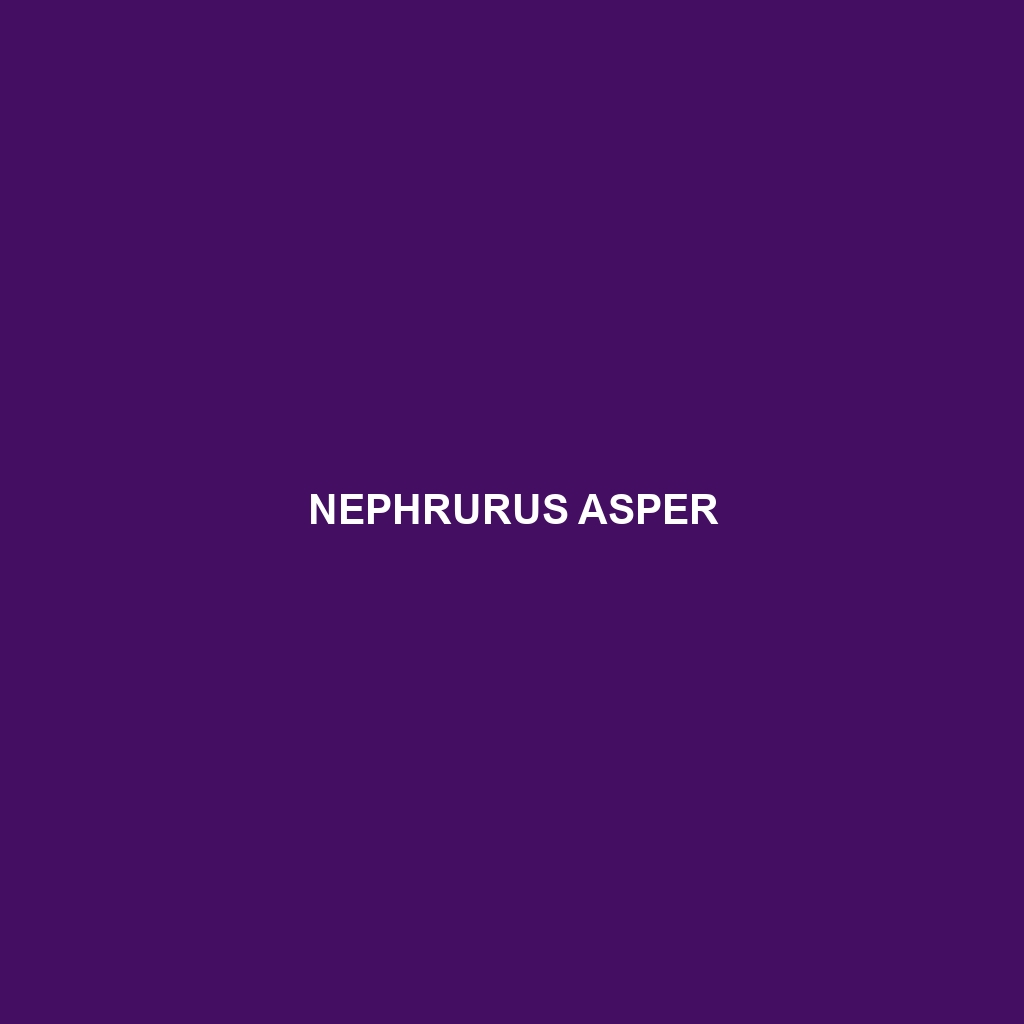Common Name
Nephrurus asper
Scientific Name
Nephrurus asper
Habitat
Nephrurus asper, commonly known as the rugged knob-tail gecko, primarily inhabits a variety of environments across Australia, particularly in regions that offer arid and semi-arid climates. These geckos are often found in open grasslands, woodlands, and scrublands, with a preference for sandy soils that allow for their distinctive burrowing behavior. The rugged knob-tail gecko is usually located in higher elevations and more temperate areas, making it resilient to changing environmental conditions. This adaptability to different ecosystems allows Nephrurus asper to thrive in diverse habitats, from coastal areas to inland regions, underscoring its ecological versatility and significance.
Physical Characteristics
Nephrurus asper is easily identifiable by its unique physical attributes. Generally, this gecko measures around 15 to 25 centimeters in length, making it relatively small. Its coloration varies, typically displaying a combination of browns, grays, and yellows, which serve as camouflage against the sandy and rocky substrates of its habitat. One of the most distinctive features of Nephrurus asper is its flattened, star-shaped tail that resembles a knob, aiding in its burrowing behavior. This tail, along with its robust body and strong limbs, is well-adapted for digging and helps it evade predators. The gecko’s tiny, granular scales add to its unique texture, complementing its effective camouflaging capabilities in the wild.
Behavior
Nephrurus asper exhibits fascinating behavioral traits, particularly its nocturnal lifestyle. Active during the night, this gecko emerges from its burrow to hunt and interact. Socially, Nephrurus asper tends to be solitary, though it may occasionally tolerate other geckos in the same territory. During the breeding season, males engage in elaborate displays to attract females, including head bobbing and tail waving as part of their mating rituals. Interestingly, these geckos are proficient burrowers, often constructing extensive tunnel systems that serve as shelters from extreme temperatures and predators. Their ability to quickly camouflage and remain motionless enhances their survival strategy in the wild.
Diet
Nephrurus asper is primarily insectivorous, feeding on a variety of insects that are abundant in their habitat. This diet includes crickets, beetles, and ants, which are crucial for meeting their nutritional needs. Occasionally, these geckos may consume small invertebrates, making them predominantly carnivorous. Their feeding patterns are characterized by foraging at night, leveraging their excellent vision to hunt prey effectively. By maintaining a diet rich in protein, Nephrurus asper plays a critical role in controlling insect populations and contributes to the overall health of its ecosystem.
Reproduction
The reproductive cycle of Nephrurus asper is typically seasonal, with nesting occurring from late spring to early summer. During this time, females lay clutches of one to two eggs, which they bury in sandy soil to protect them from predators. The incubation period lasts approximately 50 to 60 days, after which hatchlings emerge and are about the size of a small finger. Parental care is minimal; however, the hatchlings are independent from the moment they leave the nest. The rapid growth rate of these geckos allows them to reach sexual maturity within one to two years, ensuring the continuation of their population in the wild.
Conservation Status
Currently, Nephrurus asper is classified as “Least Concern” by the International Union for Conservation of Nature (IUCN). This status reflects a stable population and a broad distribution, with no immediate threats identified impacting its survival. However, habitat destruction due to urban development and agriculture remains a potential challenge for these geckos in certain regions. Conservation efforts to protect their natural habitats are crucial for maintaining their population stability, ensuring that Nephrurus asper continues to thrive in the wild.
Interesting Facts
One intriguing aspect of Nephrurus asper is its ability to exhibit autotomy, a defense mechanism that allows it to shed part of its tail when threatened by predators. The tail can regrow over time, although the new tail may differ in appearance from the original. Additionally, these geckos possess a unique ability to change their body posture, flattening themselves against the ground as a means of evasion. This adaptability is a testament to their evolution and survival tactics.
Role in Ecosystem
Nephrurus asper plays a significant role within its ecosystem as both predator and prey. By controlling insect populations, this gecko helps maintain the ecological balance in its habitat. Furthermore, as a prey species, it serves as an important food source for larger predators, such as birds of prey and snakes. This relationship illustrates its integral role in the food web, contributing to the biodiversity and health of the environments in which it thrives. As such, the conservation of Nephrurus asper is essential for preserving the ecological integrity of the regions it inhabits.
